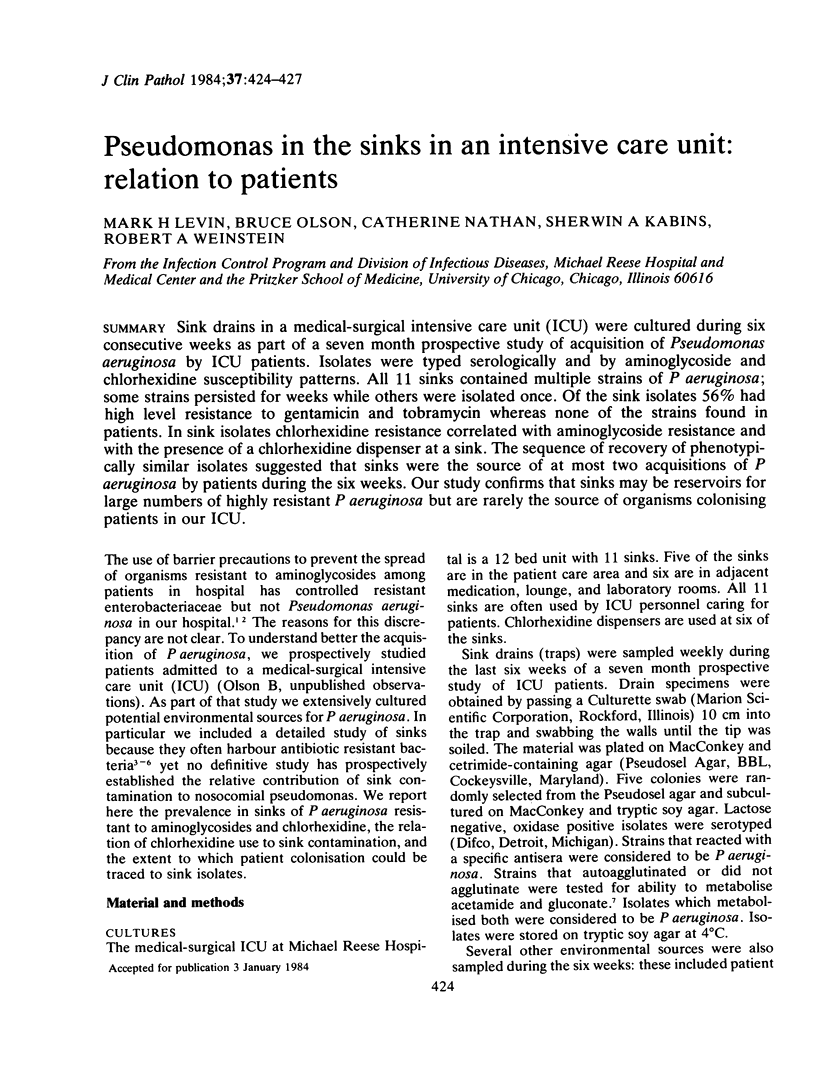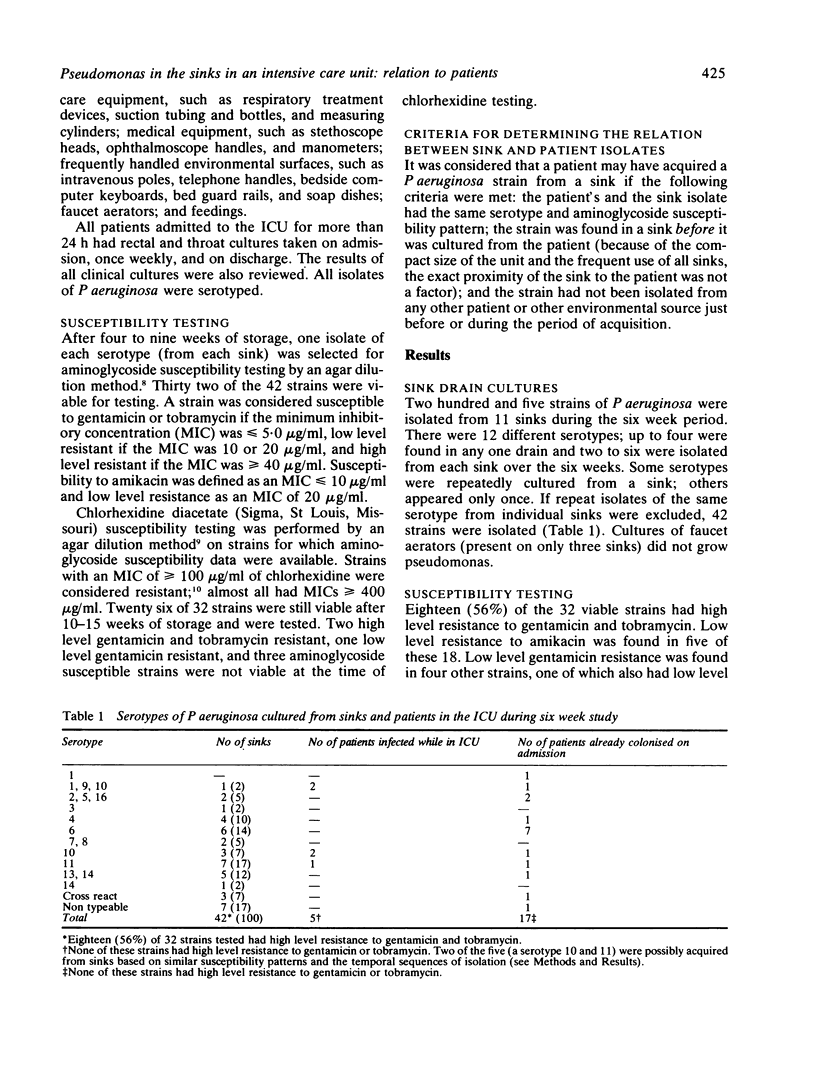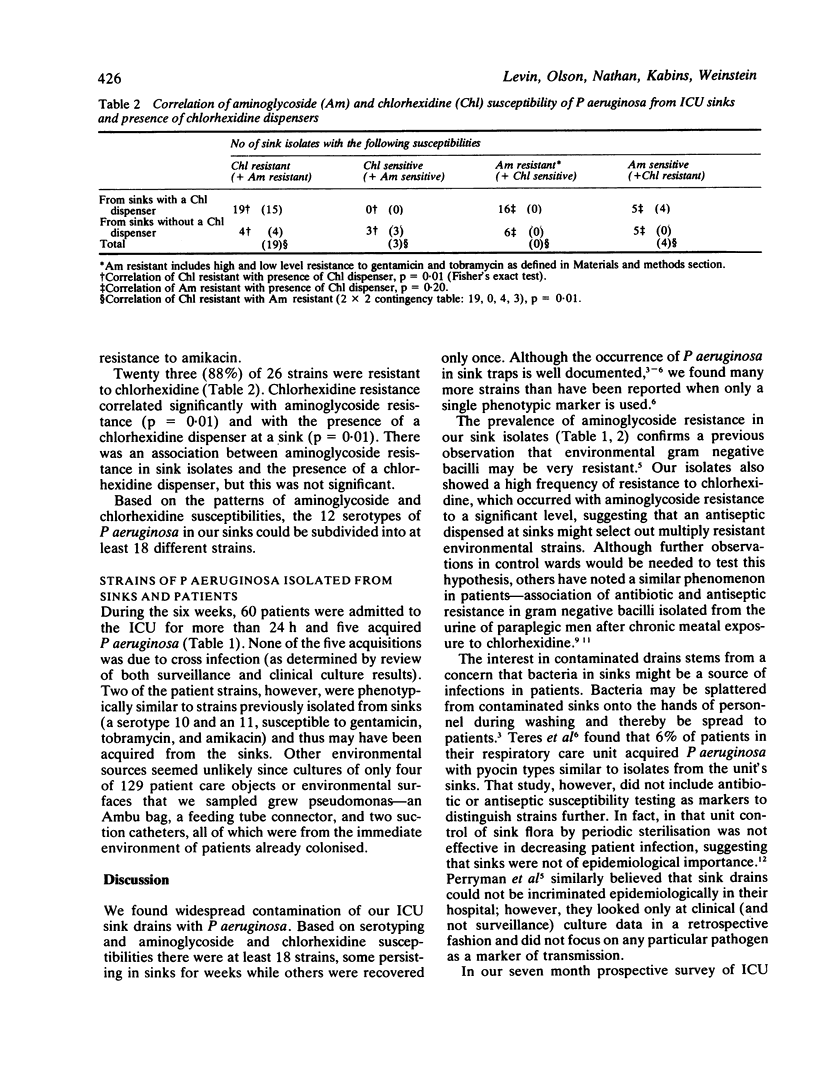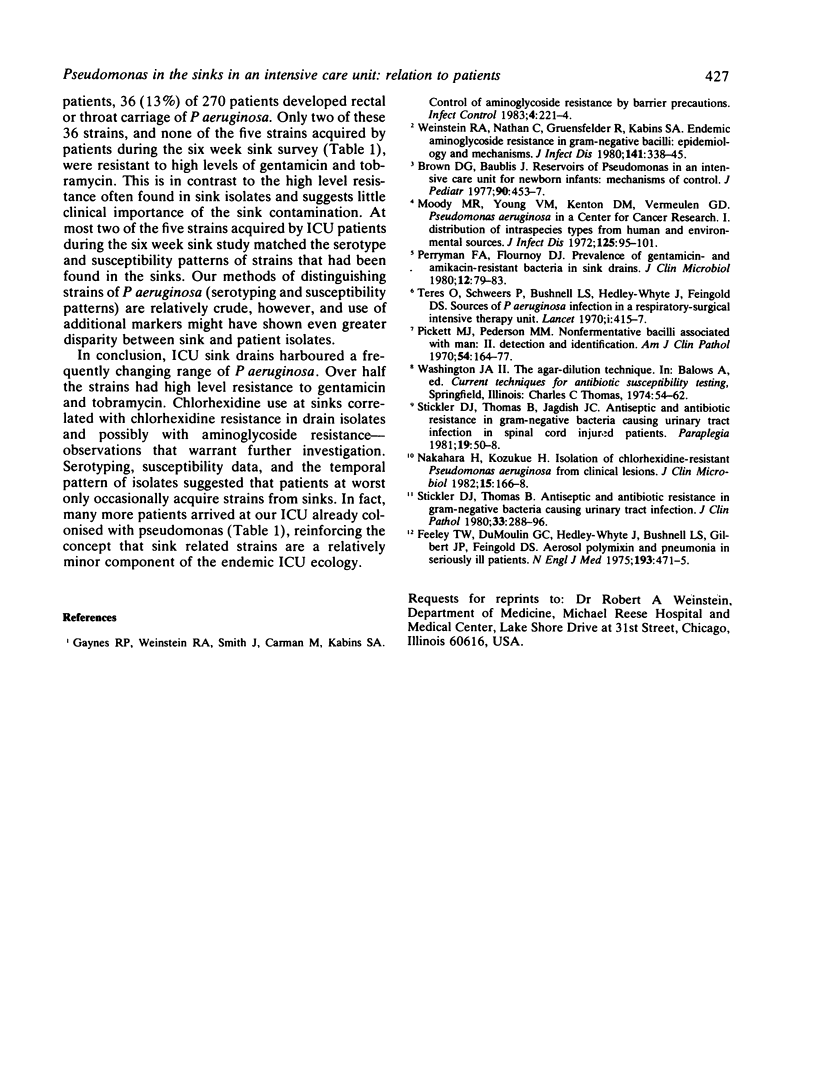Abstract
Sink drains in a medical-surgical intensive care unit (ICU) were cultured during six consecutive weeks as part of a seven month prospective study of acquisition of Pseudomonas aeruginosa by ICU patients. Isolates were typed serologically and by aminoglycoside and chlorhexidine susceptibility patterns. All 11 sinks contained multiple strains of P aeruginosa; some strains persisted for weeks while others were isolated once. Of the sink isolates 56% had high level resistance to gentamicin and tobramycin whereas none of the strains found in patients. In sink isolates chlorhexidine resistance correlated with aminoglycoside resistance and with the presence of a chlorhexidine dispenser at a sink. The sequence of recovery of phenotypically similar isolates suggested that sinks were the source of at most two acquisitions of P aeruginosa by patients during the six weeks. Our study confirms that sinks may be reservoirs for large numbers of highly resistant P aeruginosa but are rarely the source of organisms colonising patients in our ICU.
Full text
PDF



Selected References
These references are in PubMed. This may not be the complete list of references from this article.
- Brown D. G., Baublis J. Reservoirs of pseudomonas in an intensive care unit for newborn infants: mechanisms of control. J Pediatr. 1977 Mar;90(3):453–457. doi: 10.1016/s0022-3476(77)80715-4. [DOI] [PubMed] [Google Scholar]
- Feeley T. W., Du Moulin G. C., Hedley-Whyte J., Bushnell L. S., Gilbert J. P., Feingold D. S. Aerosol polymyxin and pneumonia in seriously ill patients. N Engl J Med. 1975 Sep 4;293(10):471–475. doi: 10.1056/NEJM197509042931003. [DOI] [PubMed] [Google Scholar]
- Gaynes R. P., Weinstein R. A., Smith J., Carman M., Kabins S. A. Control of aminoglycoside resistance by barrier precautions. Infect Control. 1983 Jul-Aug;4(4):221–224. doi: 10.1017/s0195941700058264. [DOI] [PubMed] [Google Scholar]
- Moody M. R., Young V. M., Kenton D. M., Vermeulen G. D. Pseudomonas aeruginosa in a center for cancer research. I. Distribution of intraspecies types from human and environmental sources. J Infect Dis. 1972 Feb;125(2):95–101. doi: 10.1093/infdis/125.2.95. [DOI] [PubMed] [Google Scholar]
- Nakahara H., Kozukue H. Isolation of chlorhexidine-resistant Pseudomonas aeruginosa from clinical lesions. J Clin Microbiol. 1982 Jan;15(1):166–168. doi: 10.1128/jcm.15.1.166-168.1982. [DOI] [PMC free article] [PubMed] [Google Scholar]
- Perryman F. A., Flournoy D. J. Prevalence of gentamicin- and amikacin-resistant bacteria in sink drains. J Clin Microbiol. 1980 Jul;12(1):79–83. doi: 10.1128/jcm.12.1.79-83.1980. [DOI] [PMC free article] [PubMed] [Google Scholar]
- Pickett M. J., Pedersen M. M. Nonfermentative bacilli associated with man. II. Detection and identification. Am J Clin Pathol. 1970 Aug;54(2):164–177. doi: 10.1093/ajcp/54.2.164. [DOI] [PubMed] [Google Scholar]
- Stickler D. J., Thomas B. Antiseptic and antibiotic resistance in Gram-negative bacteria causing urinary tract infection. J Clin Pathol. 1980 Mar;33(3):288–296. doi: 10.1136/jcp.33.3.288. [DOI] [PMC free article] [PubMed] [Google Scholar]
- Stickler D. J., Thomas B., Chawla J. C. Antiseptic and antibiotic resistance in gram-negative bacteria causing urinary tract infection in spinal cord injured patients. Paraplegia. 1981;19(1):50–58. doi: 10.1038/sc.1981.13. [DOI] [PubMed] [Google Scholar]
- Weinstein R. A., Nathan C., Gruensfelder R., Kabins S. A. Endemic aminoglycoside resistance in gram-negative bacilli: epidemiology and mechanisms. J Infect Dis. 1980 Mar;141(3):338–345. doi: 10.1093/infdis/141.3.338. [DOI] [PubMed] [Google Scholar]


